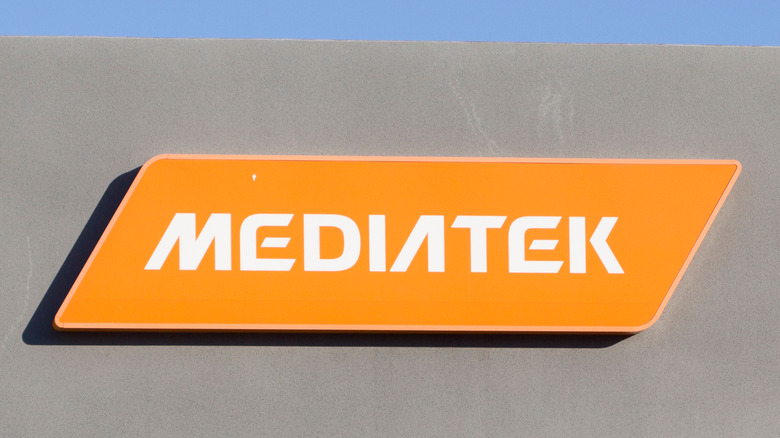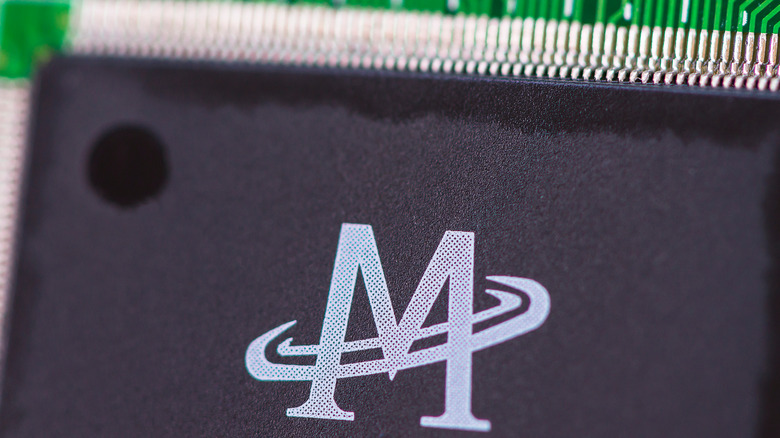MediaTek Dimensity 1050 Takes Aim At The US mmWave 5G Market
Although Qualcomm's Snapdragon is still the household name when it comes to smartphone chipsets, MediaTek has managed to change the status quo a bit, especially over the past two years. For a few quarters and in a few markets, the latter company actually reached the top spot, dethroning long-time rival Qualcomm. The company's 5G and 4G processors already power many phones, including some sold in the U.S., but there is one particular market segment that it has so far failed to enter. That changes with the launch of the MediaTek Dimensity 1050, the chipmaker's first-ever system-on-chip (SoC) to support mmWave 5G (via PRNewswire). More than just the new technology, however, this signal's MediaTek's more daring challenge to Qualcomm and entry into the U.S. where this particular kind of 5G is in use.
There has been a lot of marketing and buzz around 5G over the years past, but not all carriers were upfront about the different kinds of 5G available. Although still faster than 4G, the sub-6GHz 5G doesn't deliver the full promise of blazing-fast speeds that proponents preached about. It has its own advantages over its faster counterpart, though, like being able to penetrate more objects and having a longer range, but its most important property is that it's cheaper to implement and adopt, which is why most networks and hardware manufacturers use sub-6GHz 5G rather than mmWave.
Millimeter-Wave 5G, though, packs all of the benefits the technology has to offer, including a wider bandwidth that helps decongest networks. That benefit comes at the price of shorter ranges and additional equipment, however, including the need for additional chips inside smartphones. That's why very few mobile chipsets support this faster 5G technology, and Qualcomm almost has a monopoly in the market, with Samsung's Exynos trailing behind.
MediaTek Dimensity 1050 SoC detailed
MediaTek now wants to change the game with its newest chipset that supports both mmWave 5G and sub-6GHz 5G. Because mmWave 5G is only used by a relatively small number of network operators, it's hard not to see this as a strategy to take a bigger portion of the U.S. market where this type of 5G is advertised heavily by carriers. MediaTek's aggressive pricing could make it a more viable alternative for phone makers who want to cut down a bit on build costs.
Unfortunately, it seems that MediaTek may have also cut a few corners to achieve its desired price point. In terms of specs, the MediaTek Dimensity 1050 is a bit of a downgrade from the Dimensity 1100 and quite a few steps down from its most premium 5G chips. The CPU, for example, has an octa-core arrangement that pairs two 2.5 GHz Cortex-A78 performance cores with half a dozen 2.0 GHz Cortex-A55 cores instead of an even split. The GPU is also an Arm Mali-G610 MC3 instead of the more recent Mali-G710 silicon.
Of course, the processor is equipped with plenty of other features, like support for 144 Hz Full HD+ screens, 2x2 MIMO and Wi-Fi 6, dual 5G SIM support, and more. The big question now is whether there will be any takers who will bring this chip to smartphones that will be sold in the U.S. The major brands have traditionally used Qualcomm's Snapdragons in the U.S., so it may take a lot of negotiations for some of them to adopt this new MediaTek processor. Then again, it could also be an opportunity for other manufacturers to break into the U.S. market now that they finally have another mmWave 5G option.

